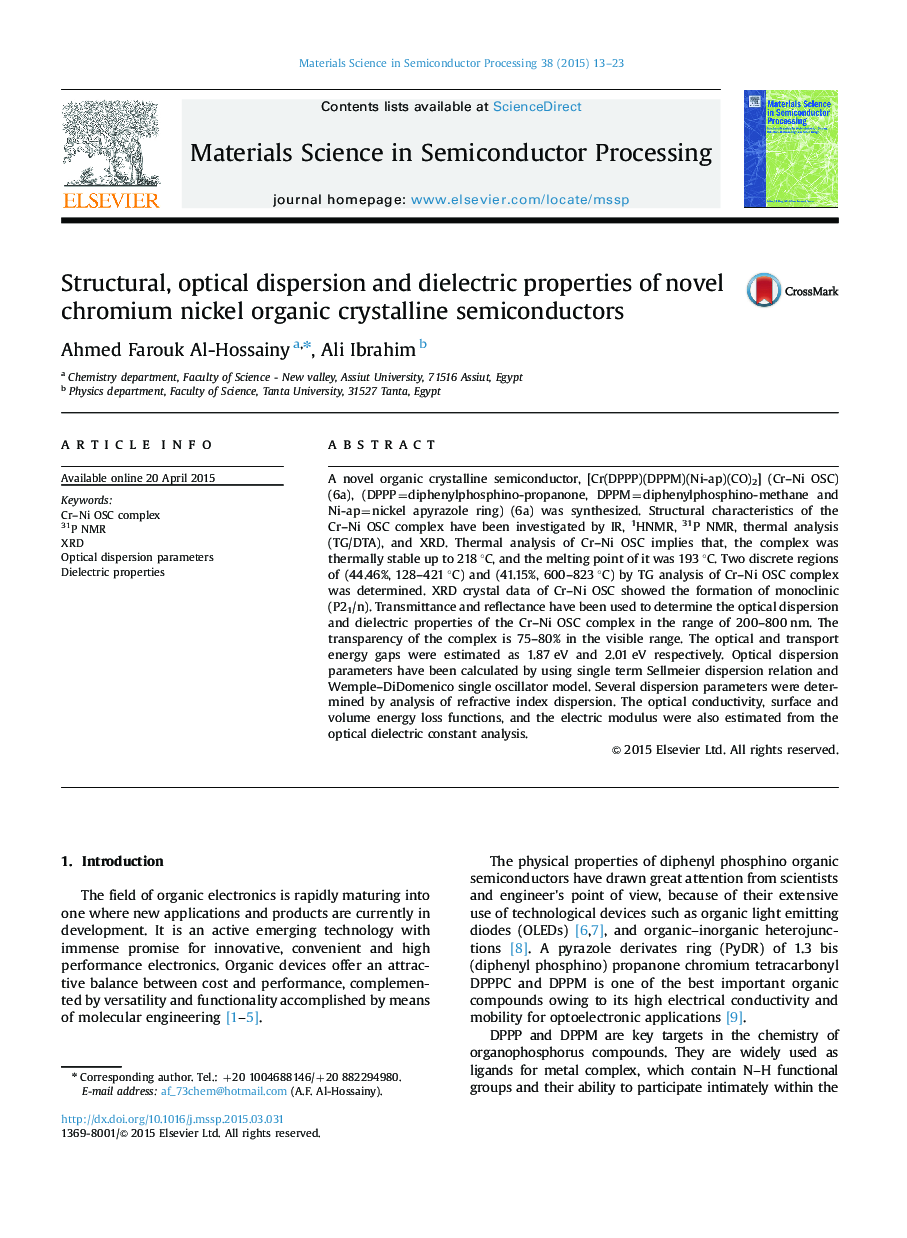| Article ID | Journal | Published Year | Pages | File Type |
|---|---|---|---|---|
| 728278 | Materials Science in Semiconductor Processing | 2015 | 11 Pages |
A novel organic crystalline semiconductor, [Cr(DPPP)(DPPM)(Ni-ap)(CO)2] (Cr–Ni OSC) (6a), (DPPP=diphenylphosphino-propanone, DPPM=diphenylphosphino-methane and Ni-ap=nickel apyrazole ring) (6a) was synthesized. Structural characteristics of the Cr–Ni OSC complex have been investigated by IR, 1HNMR, 31P NMR, thermal analysis (TG/DTA), and XRD. Thermal analysis of Cr–Ni OSC implies that, the complex was thermally stable up to 218 °C, and the melting point of it was 193 °C. Two discrete regions of (44.46%, 128–421 °C) and (41.15%, 600–823 °C) by TG analysis of Cr–Ni OSC complex was determined. XRD crystal data of Cr–Ni OSC showed the formation of monoclinic (P21/n). Transmittance and reflectance have been used to determine the optical dispersion and dielectric properties of the Cr–Ni OSC complex in the range of 200–800 nm. The transparency of the complex is 75–80% in the visible range. The optical and transport energy gaps were estimated as 1.87 eV and 2.01 eV respectively. Optical dispersion parameters have been calculated by using single term Sellmeier dispersion relation and Wemple–DiDomenico single oscillator model. Several dispersion parameters were determined by analysis of refractive index dispersion. The optical conductivity, surface and volume energy loss functions, and the electric modulus were also estimated from the optical dielectric constant analysis.
